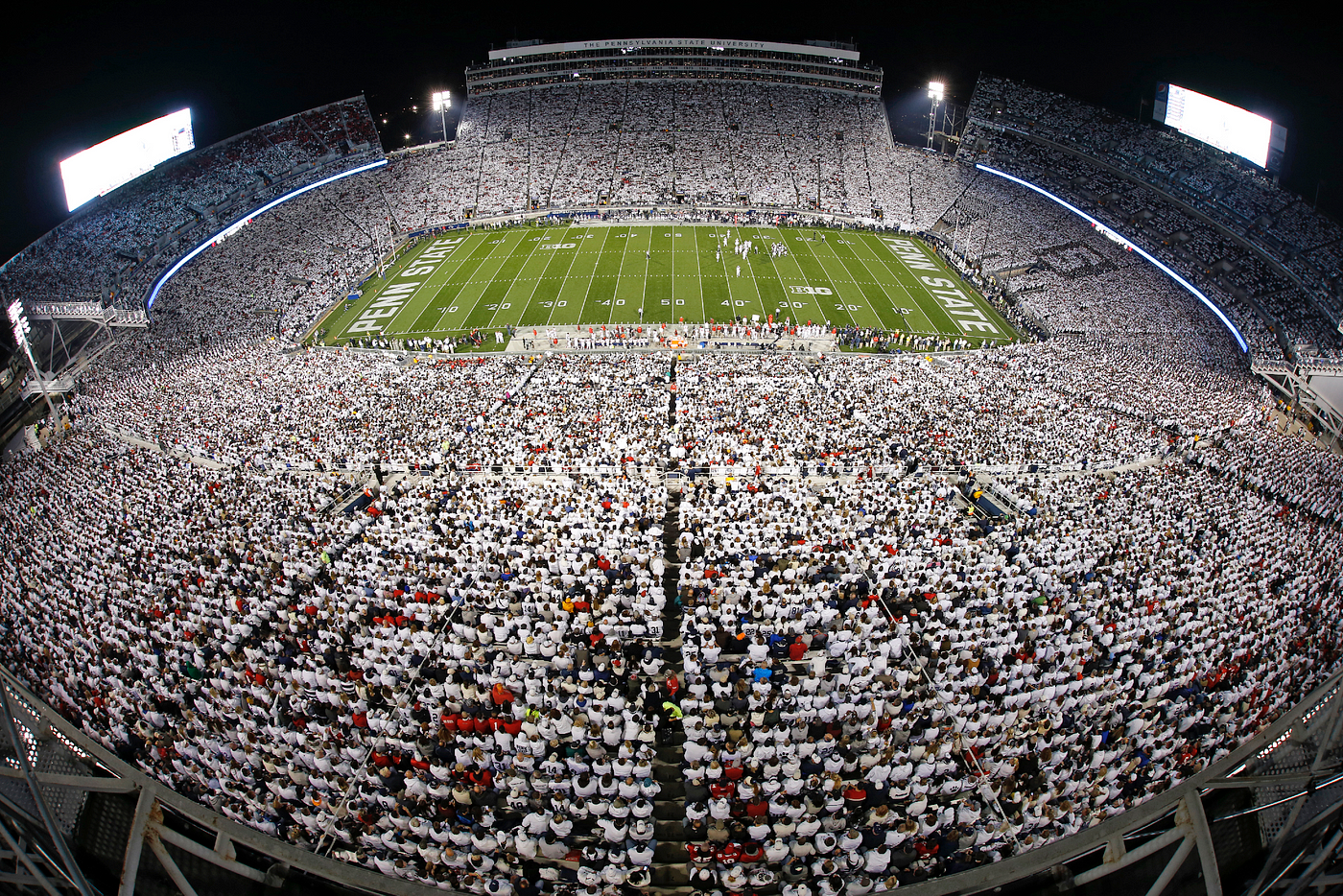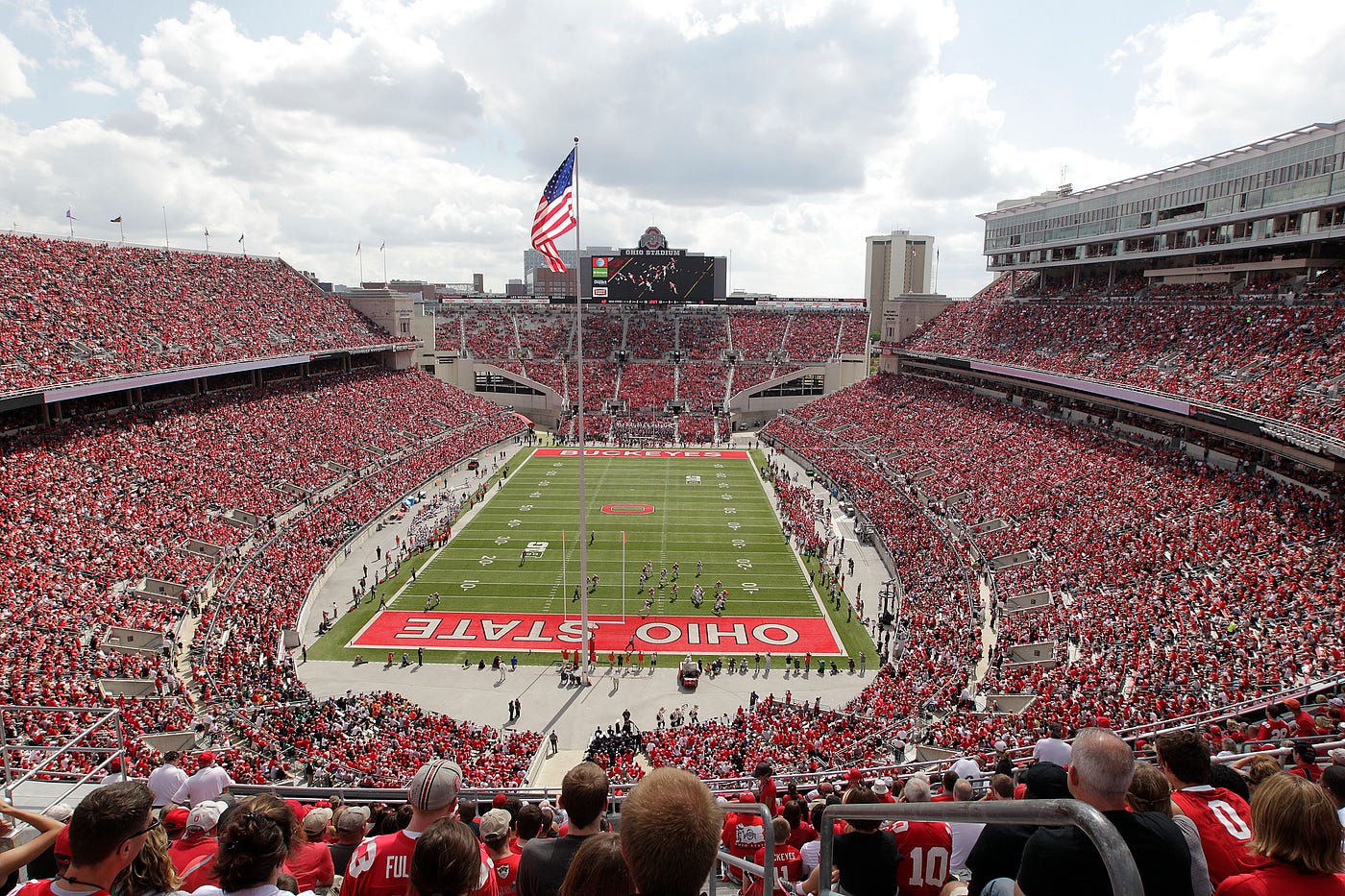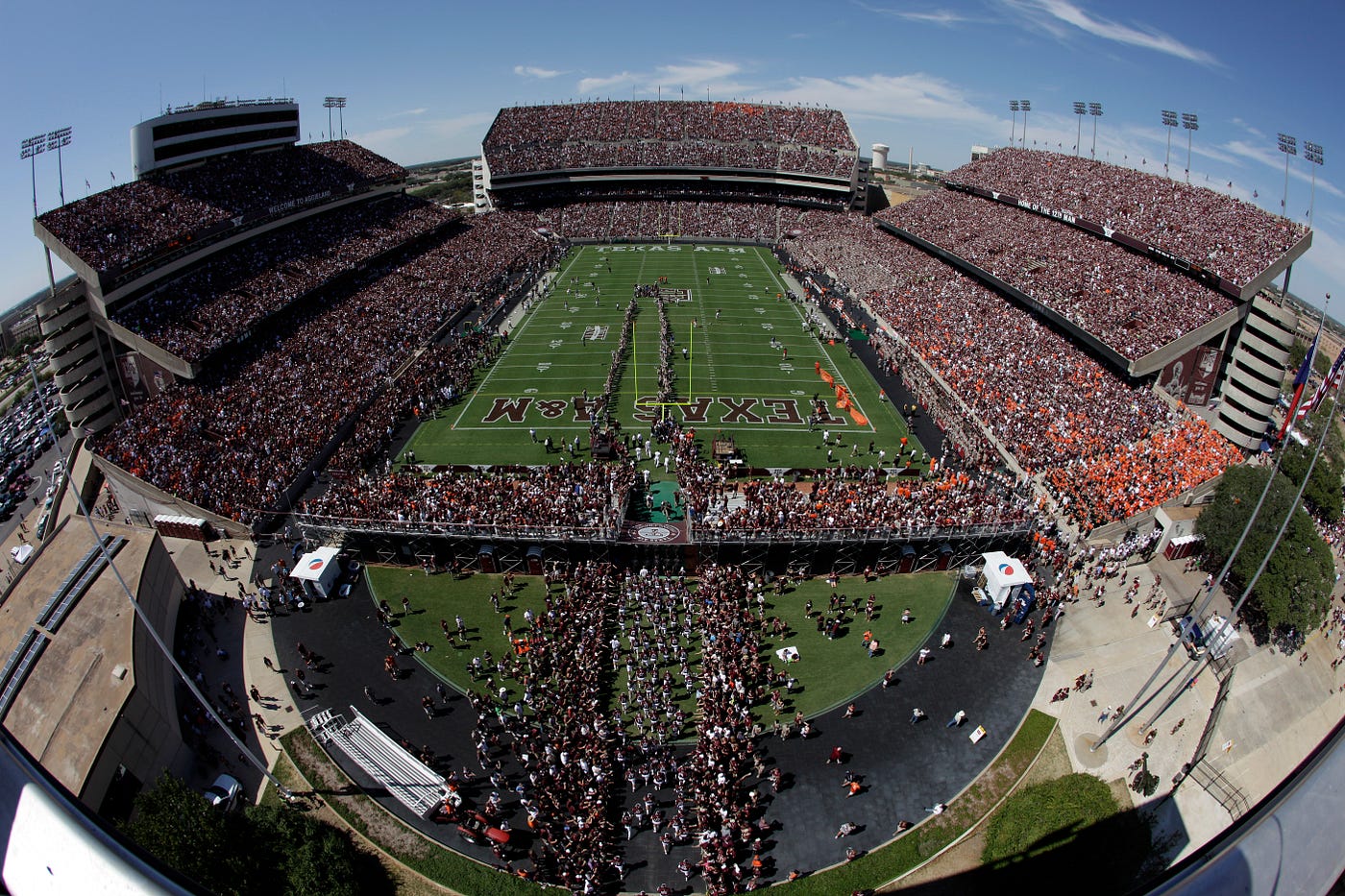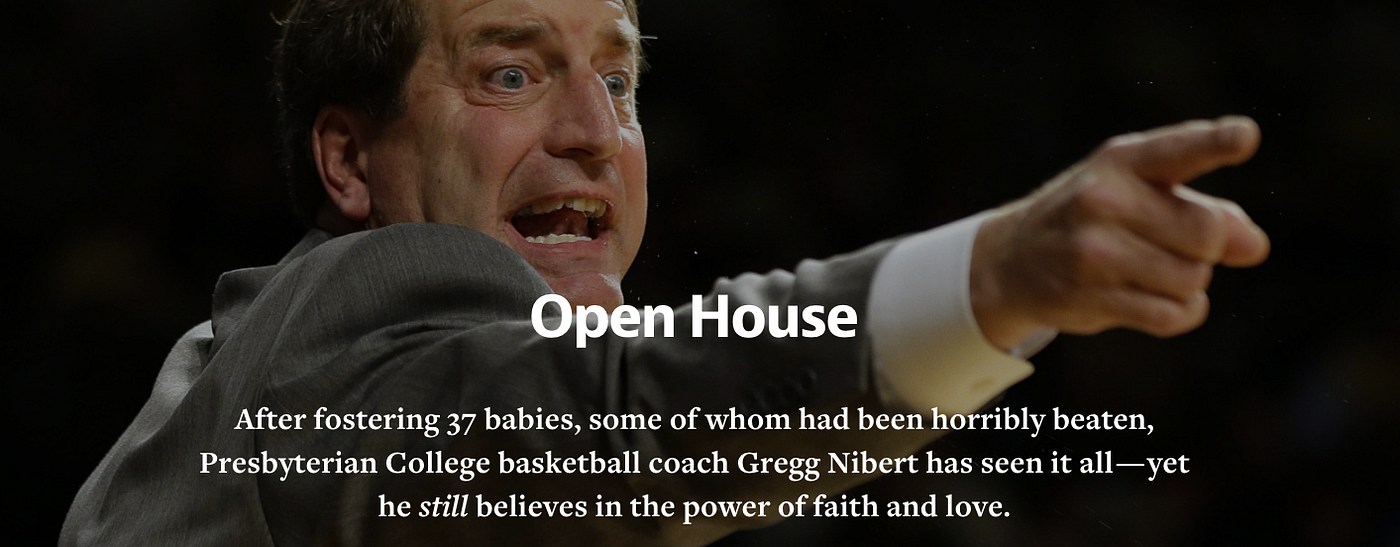How Much Money Does America Spend On Football
Wait, You lot're Spending HOW Much On The Football Program?!
With some collegiate athletic budgets now exceeding $100 million, can big-time NCAA sports and higher pedagogy peacefully co-exist?

Let'due south talk about college sports.
I'chiliad a huge college football game fan. I'k too a fan of efficient and productive universities providing affordable college didactics and fostering ground-breaking research. And despite the fact that many do not share my view, I believe that our educational institutions and large, high-profile athletics programs are not mutually incompatible.
So, is our disagreement a ward of innocent misunderstanding, or is it borne of conflicting philosophies about what an institution of college learning should be? It's probably a piddling of the former, but generally, it's the latter.

You see, there'south a lot of garbage beingness bandied around on the Internet nearly college athletics. Doing a quick Google search returns manufactures titled "Sacrificing College Quality on the Altar of Able-bodied Spending" and, "College Football Is Ruining Education." I can't aid only laugh when I read these. Aside from being hilariously melodramatic and employing suspect logic, they simply don't do a good job of addressing all sides of the issue.
For the victims of those and similar opinions, consider mine the antidote.
When yous wait at the facts, it's clear that colleges and universities are not sacrificial lambs succumbing to some collective football-lust that drives united states of america to forsake all things not gridiron- and pigskin-related. The authors of the articles mentioned in a higher place would have known this if they'd washed their homework.
I write, kickoff and foremost, in defense of big-time college athletics — which, flipping the analogy on its head, remains the real sacrificial lamb here — to rebut the falsehoods and selection statistics that make up far likewise much of what we read on the subject field.
So, what'south the problem?
The most common arguments I hear against big-fourth dimension athletics are those involving university finances. These arguments tend to revolve effectually how much money is beingness taken from students to pay for these able-bodied programs, and how spending on athletics diverts funds abroad from other departments and activities. In my view, the precedent for non-academic spending has already been fix, so the issue is less near whether any money is being put towards athletics and more about how much, if any. (We'll relieve the financial arguments for later on.)
Another common refrain is that college athletics are a lark to students. Truthfully, if the academic lives of our hereafter scientists, engineers, doctors and leaders are being ruined by a few games each fall, nosotros likely have bigger issues to grapple with than football.
Don't tell me "it just feels wrong" that sports played by students receive then much attention. That'due south weak. And if you think athletics are somehow subverting academics — financially or otherwise — the brunt of proof is on you to show why that'due south the case.

The nature of athletics makes it an easy target. Unlike auxiliary expenditures like career counseling or tutoring, some suggest that sports have little to no substantive positive impact on students' physical, emotional or intellectual well-being. "Now, football is entertaining," they'll say, "but surely entertainment is not the purpose of an establishment of college learning. Of all the things that our universities should allocate resources for, athletics is the last thing, if at all."
Surprisingly, with this I concord. Mostly.

At first glance, university athletic budgets seem to exist a legitimate business concern. We have seen an extraordinary increase in both revenues and expenditures in recent years. Data compiled by USA Today — limited considering information technology extends back only equally far as 2006 — paints a stark moving picture of recent trends:
The University of Arkansas: In 2006, information technology spent close to $49 one thousand thousand on athletics. In 2011, the spend increased to $79 million (61 percent increase over five years).
Auburn University: In 2006, it spent near $63 million on athletics. In 2011, the spend increased to but over $100 meg (59 percent increase over 5 years).
The Academy of Oregon: In 2006, it spent almost $45 one thousand thousand on athletics. In 2011, it spent over $76 million (69 percent increment over five years.)
Y'all get the thought. The data in a higher place is representative of a general trend amidst universities that compete at the highest levels of athletics. Massive expenditure increases year-over-year are becoming the norm. Absolutely, these increases, combined with the simultaneous and alarming ascension in tuition rates at both public and private schools, brand for some fairly terrible optics.
Making matters worse, data compiled past Bloomberg shows that from 1985 to 2013, college tuition and associated costs take — in nominal terms — experienced price inflation of 538%, far beyond near other asset categories over that span. For the sake of comparison, wellness care costs have risen past 286% while the consumer cost alphabetize has risen by 121%.
Data compiled past the U.S. Department of Pedagogy which tracks college costs between 1981 and 2011 puts the massive percentage increases in dollar terms. Using aggrandizement-adapted amounts, the average iv-twelvemonth public establishment in 1981 charged a student $6,942 for tuition, room and board, educatee fees, etc. The average private establishment and so cost $15,306.
In 2011, costs rose to $16,789 and $33,716 annually, respectively.
It'southward no wonder, then, that college athletics have become public enemy number one for anyone alarmed by the e'er-increasing price of higher education. Non only have costs become astronomical, it kind of looks like the increase is being driven by frivolous spending on athletics!
But looks can be deceiving.
But what do the facts tell us?
University able-bodied departments in the Power 5 conferences differ significantly from most other university ventures in that they are largely cocky-funded. This means exactly what it sounds similar. They pay for themselves with funds drawn from sources other than students, or the state (if it is a public institution).
Contrast this with something similar dining services. If a academy sought to be known for having the greatest dining hall nutrient — a noble aspiration — then the increased cost of higher quality ingredients and better chefs would be passed on to students. In fact, in the absence of outside donations, one might even project a 1:1 ratio betwixt budget increases and tuition hikes. The best university dining hall in the world would surely rely on higher tuition to support its culinary excellence.
While athletics expenses take skyrocketed in recent years, much of these expense increases have been supported by image-shifting media contracts signed by the Power 5 athletic conferences and their member schools.

Expect no further than the Big Ten Network (BTN), a television network and media enterprise formed past the Big Ten conference, which broadcasts athletic events and shows revolving around its member schools. Established in 2006, the Network has become a financial cow for Big Ten members. Each of the eleven fully-vested Big Ten teams (Nebraska, Rutgers and Maryland must look a few years to receive full payments since they only recently joined the league) are set to receive $27 million for the 2013–2014 flavour, $30.9 million for the 2014–2015 season, $34.1 meg for 2015–2016, and $35.v million for 2016–2017.
Once broadcast fees are renegotiated with the other major TV providers, payments per school(!) are projected to be more than $45 million per yr past the 2017–2018 season. Other conferences take taken notice and followed conform in creating their ain networks. The Pac-12 Network, SEC Network and ACC Network each generate — or are projected to make — figures similar to BTN's booty.
The reality is that information technology's the massive revenue created by conference television networks — in combination with more than traditional acquirement streams like ticket and merchandise sales, donations, naming rights, etc. — that has driven the massive increase in spending on athletics that we have seen in recent years.
Revenue attributed to sources other than students or the land (or earmarked funding for enquiry) cannot be targeted by opponents of big-fourth dimension college athletics. This coin exists solely to back up the athletic program. Abolishing the program would only not redirect that revenue to the university'south coffers.
Sure, just what near those subsidies?
Of form, none of this addresses whether students are paying more than than their fair share (which, of course, will vary, depending on who yous talk to).
First, what do we mean, exactly, when we speak of subsidies? Simply put, they correspond the funding that an able-bodied section receives from the academy's general fund and/or pupil fees. For this reason, subsidies are more vulnerable to criticism than other sources of athletic revenue. After all, these funds could be spent on laboratories, computers, or passed back to students through tuition reductions.

Above are the top-10 university athletic programs ranked by full revenue, using data compiled by U.s. Today. The numbers are massive, merely only money listed in the subsidies column is paid by the school and/or the students.
Wait a minute… at the University of Wisconsin, revenue exceeds spending by virtually $3 meg dollars, nevertheless the school yet shells out over $seven million in the form of a subsidy. What gives?
Clever accounting and ulterior motives often deject the numbers here. Depreciation of facilities — coin which never really existed — can be factored into academy accounts every bit a debit, which makes its manner into the financial report as part of a subsidy. Athletic departments probably tend to depict themselves as poorer than they really are in order to have more control over the money they do make. (If a school looked like it was flush with cash, other interests inside the university might seek to take greater bites out of the revenue pie.)
Such financial wizardry and questionable incentives, nevertheless, can only explain the subsidies of those few universities lucky plenty to actually be turning a profit. The majority of universities included in the USA Today data set exercise actually relish subsidies to support their athletic programs. That said, the amount of the subsidies are mostly not big enough to support the straw man argument that opponents of higher athletics often preach.
Consider, again, Wisconsin. For the sake of argument, permit'due south say that it "enjoys" an $8 million athletic subsidy. Seems large, right? Just when yous apply that total on a subsidy-per-student ground — the Academy of Wisconsin in Madison has almost 30,000 undergraduates — it means that each pupil pays only $267 per year to back up the able-bodied program.
Wisconsin currently charges in-state students $ten,410 to attend the flagship campus (out-of-state students pay $26,660). If the school eliminated the subsidy to athletics, in-land and out-of-state tuition and fees would all the same be $ten,143 and $26,393, respectively — with those funds just beingness allocated to things other than sports.
This isn't just the instance in Wisconsin, either. Amid universities in the Power five conferences, that $8 million subsidy is actually above boilerplate. Looking at the top-50 schools by able-bodied department acquirement, the boilerplate subsidy is actually closer to $6.3 million. Given that most Ability five member institutions are large flagship land universities with huge undergraduate populations, the average subsidy per student does non deviate far from the Wisconsin figure of $267-per-student (with many Ability five academy subsidies actually much less).

Yes, on a per-student ground, the subsidy is minor in the grand budgetary scheme of things, but I acknowledge that it all the same represents money which could be spent elsewhere. Just those who are dead assail completely eliminating all university fiscal support for athletic programs may desire to consider the post-obit fact: amidst Power v Conference athletic programs, the portion of their revenue that is a subsidy is, on average, less than ten%.
Forgetting, for a moment, how insignificant subsidies are, banning them altogether would well-nigh certainly not rid the nation of of big-time athletics. Coaches' salaries would remain enormous, recruiting budgets would still hover above a million dollars, and higher players would proceed to play on alive television only like their professional counterparts — all at no cost to the university.

Looking further down the list of university information compiled by United states Today, nosotros find that many small schools like NJIT, Primal Connecticut Land, and Youngstown Country really fund the entirety of athletic departments budget through subsidies. When manufactures are written about "Big-Time Athletics" at the college level, these schools and others like them are definitely non in the cross-hairs.
Though it may be apples to oranges, to some degree, I don't advocate for such schools eliminating their athletic departments, either — nor do I endorse unchecked subsidies for athletics. I do believe that these schools — similar all schools — should make a concerted effort to reduce their athletic subsidies when reasonably practicable.
The caveat here is that smaller, non-Power 5 universities must decide for themselves whether the expense is worth it — a decision based on the private schoolhouse and the sentiments of its students, alumni, donors, faculty and administration. Whatsoever broad, ane-size-fits-all approach that seeks to dictate the future of such programs will inherently fail to account for these nuanced, yet necessary, aspects of the debate.
Well, what does it all mean?
You can't argue with the facts. Saying that big-fourth dimension higher athletics stand for some sort of major threat to universities is just plain old hyperbole. While subsidies to athletics have risen over the years, nearly of the massive increases in athletic spending amid Power v conference programs have come from sources other than students and the host establishment itself.
Given the huge need and alumni support for college football — and, to a lesser extent, basketball — effective acquirement streams exist that will allow big-fourth dimension athletics to thrive with or without continued university support. It's really a non-issue.
For those of us who are troubled by the rapidly increasing cost of higher education in America, worrying most big-time college athletics misses the mark. Academy tuition would exist high even if subsidies to athletics ceased to exist. We should be asking ourselves what the root causes of these price increases are, not chasing red herrings like collegiate athletics. If and when we identify the existent reasons for skyrocketing tuition will we be able to explore solutions to the problem.
Source: https://the-cauldron.com/wait-youre-spending-how-much-on-the-football-program-ea132e5628a3
Posted by: davishinflid1975.blogspot.com

0 Response to "How Much Money Does America Spend On Football"
Post a Comment